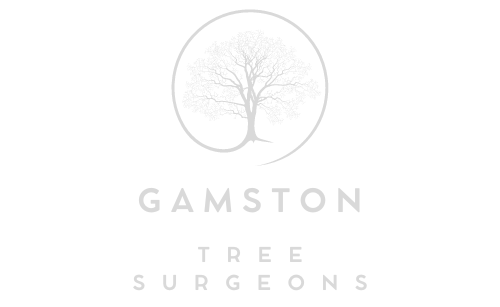Tree Surgery Techniques for Hazardous Trees: Safeguarding Your Property and Safety
Introduction: Trees are a valuable part of our natural environment, offering beauty, shade, and habitat for wildlife. However, when trees become hazardous due to disease, decay, or structural issues, they can pose significant risks to property and safety. In this blog post, Gamston Tree Surgeons explores essential tree surgery techniques for addressing hazardous trees, emphasising the importance of professional intervention to mitigate potential dangers.
1. Hazard Assessment
A comprehensive hazard assessment is the first step in dealing with a hazardous tree. Professional tree surgeons are trained to identify signs of danger, such as:
- Structural Instability: Cracks, splits, or leaning trees that indicate potential collapse.
- Disease and Decay: Fungi, pests, or rot that weaken the tree’s structure.
- Overhanging Branches: Limbs at risk of falling on structures or walkways.
- Root Issues: Root decay or disruption that may lead to uprooting.
2. Pruning and Trimming
For some hazardous trees, pruning and trimming can reduce the risk by removing weakened or overhanging branches. This process, known as “crown reduction,” lowers the tree’s wind resistance and minimises the potential for limb breakage during storms or high winds.
3. Cable and Bracing
In cases where a tree’s structure is compromised but can still be saved, tree surgeons may use cabling and bracing systems. These support mechanisms help stabilise the tree, preventing further leaning or splitting.
4. Tree Removal
When a hazardous tree cannot be safely saved, removal is often the only option. Professional tree surgeons employ safe and controlled techniques to fill the tree, ensuring it doesn’t cause further damage or pose risks during removal.
5. Stump Grinding and Removal
After removing a hazardous tree, the stump left behind can be a tripping hazard and may host pests or fungi. Tree surgeons can perform stump grinding or complete stump removal to eliminate these issues and restore the area’s safety.
6. Root Management
Tree roots can sometimes be a hazard, especially if they damage foundations, walkways, or utility lines. Tree surgeons can employ root management techniques, such as root pruning or barrier installation, to redirect or contain root growth safely.
7. Regular Inspections
Prevention is key to avoiding hazardous trees. Regular inspections by professional tree surgeons can detect and address issues early before they become dangerous. Early intervention can often save a tree from becoming hazardous.
Conclusion: Dealing with hazardous trees requires expertise, caution, and a commitment to safety. Professional tree surgeons are trained to assess, address, and manage hazardous trees through various techniques, from pruning and bracing to removal and stump grinding. Timely intervention and proactive tree care are essential to protect property and ensure safety in areas with trees at risk. Gamston Tree Surgeons is dedicated to safeguarding your property and preserving the beauty and benefits of trees while minimising potential hazards.
Call us on: 0115 697 1170
Click here to find out more about Gamston Tree Surgeons
Click here to complete our contact form and see how we can help with your tree’s needs.

